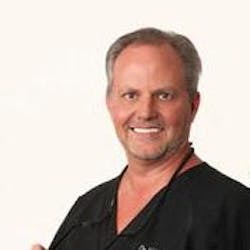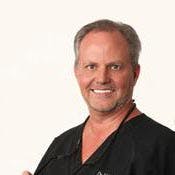Breaking through the plateau
By Michael Kesner, DDS
Do you feel as if your practice is stuck? Has your revenue hit a ceiling? Do you feel as if you are busy but your growth has stopped?
Most dentists experience a plateau in their practice at some point. First, the key to fixing this is to understand what the problems are, then to address them in the proper order.
The reason practices plateau is often due to some form of a capacity blockage. The practice has run into blockages that keep it from producing the additional revenue that it otherwise could.
Here are three common capacity blockages that I often see in practices:
1. Facility: Not having enough doctor and/or hygiene treatment rooms. This capacity blockage keeps you from doing same-day dentistry, or getting another hygienist, or assisting the hygienist you already have. I find that many dentists wait way too long to add more doctor or hygiene treatment rooms.
If your patients have to wait two weeks or more to see the hygienist or the doctor, then you have a capacity blockage. Most new patients will go to another dental office rather than wait two weeks or more to get their teeth cleaned. Patients want convenient appointment times on your schedule. Many patients also like the opportunity to do their dental treatment the same day it is diagnosed.
If you have an extra doctor treatment room and another dental assistant, then you have the ability to work that treatment into your schedule today. An additional doctor treatment room will cost you about $250 a day. This is approximately $200 a day for the additional dental assistant and about $50 a day to pay the note on the equipment.
If you add just one crown a day in same-day dentistry to the schedule, then you are profitable. An additional treatment room means $200,000 to $300,000 a year in increased production. If you add an additional hygiene room, then you open up the schedule to see more hygiene recall patients and offer more appointment times for new patients. This would increase the number of exams you do by six to eight a day. If you are doing more exams, then you are doing more dentistry.
A good rule of thumb for revenue generated per treatment room (doctor and hygiene) is $25,000 to $30,000 per month per room. If you are not producing at this level, then you probably have an efficiency blockage, not a facility blockage.
2. Efficiency: Many times it makes more sense to increase the efficiency of the office before adding another treatment room. If your procedures, systems, and scheduling are more efficient, then you can create more time to do more dentistry.
For instance, in my office, the team runs the schedule and the patient flow during the day. Team members communicate with one another via radios with an earpiece. This allows them to direct me throughout the day from room to room, greatly increasing my efficiency. I do not have to make decisions about where patients are scheduled and when, or if we can work in same-day dentistry, or which patient to see next. I just focus on taking care of the patients and doing good dentistry. The team does the rest.
When I walk into the treatment room to do a new-patient exam or dental treatment, everything is set up and ready to go. I do not have to waste time doing things that can be delegated. Also, as my efficiency goes up, my stress goes down.
3. Number of producers: If your efficiency is running at maximum performance and you have enough treatment rooms, then a capacity blockage can develop from not having enough producers.
Bringing on an associate dentist is a big step, especially if you have not done this before, or if you have had a previous associate relationship that went bad. An associate dentist can be a big win/win relationship if done correctly.
I find that many times an owner/doctor will hire an associate before there is the new-patient base to support them. This means that the new doctor is doing dentistry that the owner/doctor could be doing if the number of new patients, efficiency, and facility blockages were addressed first.
Identifying and fixing capacity blockages can help break through your plateau. Get some help from someone who knows what he or she is doing in this area. Doctors typically need help finding out what the blockages are, and then how to fix them correctly.
___________________________________
More by Dr. Mike Kesner:
___________________________________
Past DE Issues

